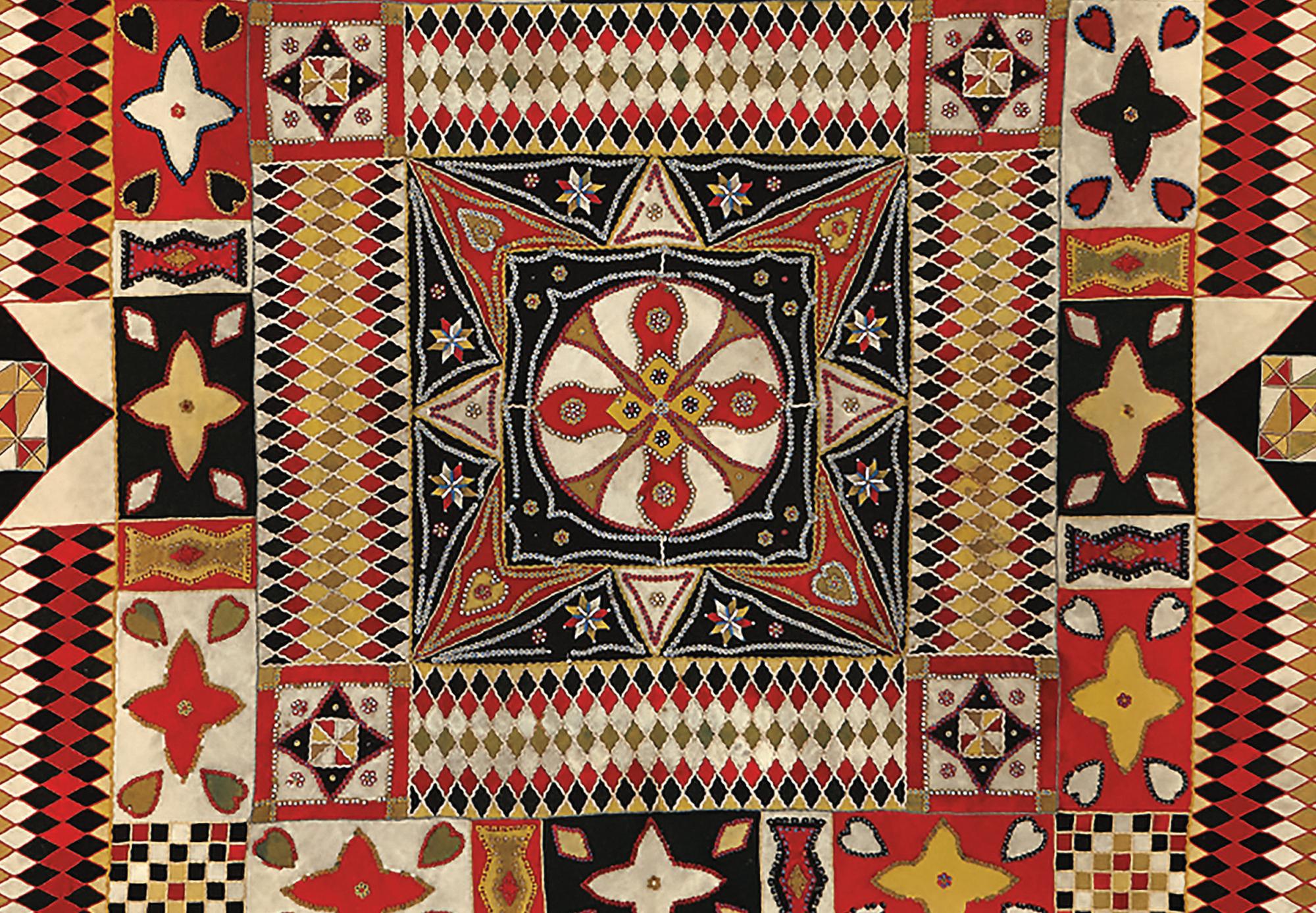
War and Pieced
May 25-Sept. 16, 2018
The Annette Gero Collection of Quilts from Military Fabrics

The theater of war is an unlikely backdrop for the making of quilts of dazzling beauty. Stitched with varying degrees of skill by soldiers, sailors, and regimental tailors, from a distance they seem exemplars of disciplined precision, each small piece of heavy wool aligned to the next with military regularity. As one draws near, though, it is hard not to sense the beating hearts of men in uniform striving for normalcy—even jaunty optimism—as they braved death and duty amid volatile landscapes in the Crimea, South Africa, India, and in Prussia, Austria, and France.
The quilts in this exhibition are drawn primarily from the unparalleled collection of quilt historian Dr. Annette Gero, assembled over a period of more than thirty years from fewer than one hundred known examples. Quilt is used as a term of convenience to refer to these textiles that are not quilted, have no batting, and are almost never backed. Many were intended to be wall hung, or they were used as table covers rather than as bedcovers; others functioned as portable game boards. The end use was less critical than the act of creation itself either during a campaign or upon return to the safe harbor of home.
Complex geometric quilts associated with conflicts of the Victorian British Empire sometimes documented personal engagement in battles, regiments, and accoutrements of war. They followed an earlier tradition of pictorial inlaid quilts dating from the Prussian and Napoleonic wars of the eighteenth and early-nineteenth centuries. All are made from felted woolens used in tailoring regular military and dress uniforms. The quilts offer a mixed metaphor: One truth is the soldier’s pride in service and love of country. Another is his mute acknowledgement of the atrocities that must be expiated by fracturing a uniform and reconstructing it into something else.
Quilts made in response to war attempt to reconcile the morality of the empathetic soldier and the immorality of his deeds enacted under dire circumstances. The uniforms, associated with the best and the worst of humanity, are thus rehabilitated as an act of redemption for those darker human impulses. The uniforms are metamorphosed into testaments of ordered sanity and beauty, even as the highly organized geometry grants the soldier an illusion of control over the predations of war in which he has both witnessed and participated.
Stacy C. Hollander, exhibition cocurator
Deputy Director for Curatorial Affairs and Chief Curator, American Folk Art Museum
© 2017-2018 - This exhibition's information and photographs may not be reproduced without permission.